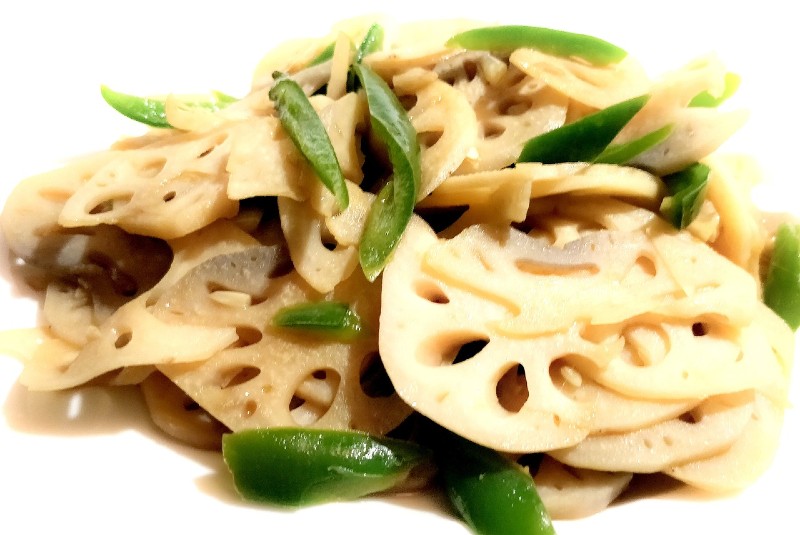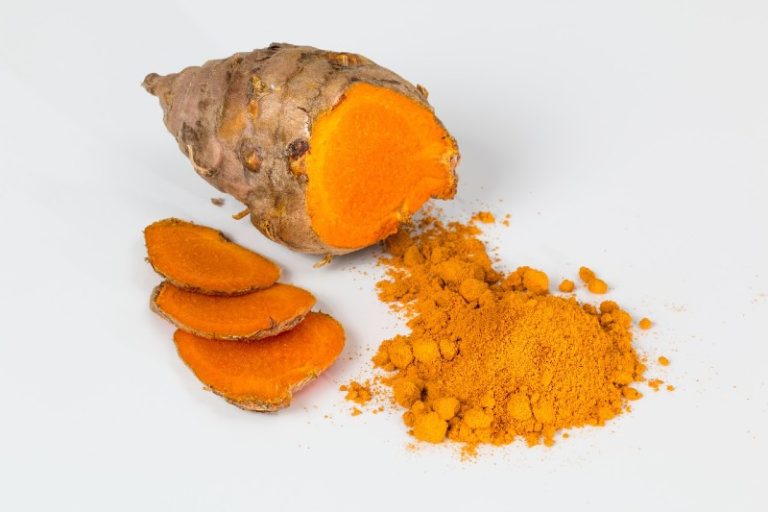What Does Lotus Root Taste Like?
Quick Answer
Lotus root has a mildly sweet and slightly nutty flavor, with a texture that is somewhat crunchy and starchy, somewhat akin to a potato or water chestnut. When cooked, the texture softens somewhat but still retains a pleasing crunch.
What is Lotus Root?
Lotus root is the underwater rhizome of the lotus plant, an aquatic perennial that is native to tropical Asia and Australia but can also be found in other parts of the world.
The root itself is long and cylindrical, with a series of interconnected air chambers that run the length of the root, giving it a distinctive appearance when sliced crosswise – almost like a lacy wheel.
The outer skin is usually a brownish color, while the inside is creamy-white. Before cooking, the skin is typically peeled, and the root is sliced or cut into various shapes.
Nutritionally, lotus root is a good source of dietary fiber, vitamins, and minerals. It’s rich in vitamin C and contains moderate amounts of other nutrients like potassium, phosphorus, copper, and manganese. It is also relatively low in calories, making it a nutritious option for those looking to add variety to their diet.
In cooking, lotus root is quite versatile. It can be boiled, deep-fried, stir-fried, steamed, braised, or used in soups and stews. It is often used in dishes like “lotus root pork rib soup” in Chinese cuisine and “renkon chips” (lotus root chips) in Japanese cuisine. Its unique texture and subtle flavor make it an interesting addition to a variety of dishes.
What Does Lotus Root Taste Like?
Lotus root has a uniquely mild and subtly sweet taste with nutty undertones. Unlike stronger-tasting vegetables like kale or arugula, lotus root offers a more understated flavor, making it a versatile ingredient in a variety of dishes.
The taste has often been compared to that of coconut water for its slight sweetness, mixed with the earthy notes you might associate with root vegetables like turnips or radishes.
Comparisons to Other Common Vegetables
When it comes to taste and texture, lotus root can be likened to a few common vegetables:
- Potato: Similar starchy quality but less bland; lotus root has a more nuanced sweetness.
- Water Chestnut: Both have a satisfying crunch, but water chestnuts are more neutral in flavor.
- Jicama: Shares a crisp texture and mild sweetness but lacks the nutty undertones of lotus root.
- Daikon Radish: Both have a similar crunch and are commonly used in Asian cuisine, but daikon has a more peppery flavor.
What is The Texture Of Lotus Root Like?
The texture of lotus root is another aspect that sets it apart:
- Raw: When raw, it is crunchy and somewhat juicy, much like a crisp apple or pear. Its texture is great for adding a crunch to salads.
- Cooked: Upon cooking, the texture softens but still retains some of its crunch, making it satisfying to eat. Whether stir-fried, boiled, or steamed, it doesn’t become mushy easily, unlike some other root vegetables like potatoes. Deep-frying transforms it into a crispy snack akin to a potato chip but with a more fibrous bite.
FAQs
Is The Taste Of Lotus Root Similar To Any Other Vegetables?
Lotus root’s taste is often compared to a mix of potato and water chestnut. It shares a starchy quality with potatoes and a crunchy texture with water chestnuts.
Does Cooking Alter The Taste Of Lotus Root?
Cooking does not significantly change the taste but can alter the texture. When cooked, it softens a bit but retains some crunch, making it a unique ingredient in various preparations like stir-fries and soups.
Is Lotus Root Sweet Or Savory?
Lotus root has a mildly sweet and nutty flavor but is generally considered more on the savory side when used in cooking, especially in dishes like stir-fries, soups, and stews.
How Does The Texture Change When It’s Cooked?
While raw lotus root is crunchy and juicy, cooking it softens the texture somewhat, but it still retains a pleasing crunch. It does not become mushy easily, making it ideal for a variety of cooking methods.
Is Lotus Root Spicy?
No, lotus root itself is not spicy. However, it can absorb the flavors of spices and seasonings used in cooking, allowing it to be a part of spicy dishes.
What Types Of Cuisine Commonly Use Lotus Root For Its Flavor?
Lotus root is prominently featured in various Asian cuisines, including Chinese, Japanese, and Korean cooking. It’s used in dishes like stir-fries, soups, salads, and even as chips when deep-fried.
Does Lotus Root Absorb The Flavor Of Other Ingredients In A Dish?
Yes, due to its mild flavor and porous structure, lotus root can absorb the flavors of other ingredients, making it a versatile component in complex dishes.
Can You Juice Lotus Root?
Yes, lotus root can be juiced and is often consumed for its potential health benefits. The juice is slightly sweet and has a starchy consistency.
Does Lotus Root Taste Like Potato?
While lotus root and potatoes are both starchy root vegetables, their flavors are not identical. Potatoes have a more neutral, earthy taste, whereas lotus root is milder with a subtle sweetness and nutty undertones.
The texture of both vegetables also varies; potatoes tend to become soft and fluffy when cooked, while lotus root retains a satisfying crunch. So, although there are similarities in the starchy nature of both, they offer distinctly different flavors and textures in culinary uses.
Can You Eat Lotus Root Raw?
Yes, you can eat lotus root raw. When raw, it has a crunchy and slightly juicy texture, similar to a crisp apple or pear. It’s often sliced thin and used in salads, and it can also be pickled for added flavor.
However, it’s important to make sure the lotus root is fresh and properly cleaned before consuming it raw.
What Does Lotus Root Smell Like?
Fresh lotus root has a mild, almost neutral scent with a faint earthy aroma.
It doesn’t have a strong or pungent smell, making it easy to incorporate into a variety of dishes without overpowering other ingredients. The smell may intensify slightly when cooked, but it generally remains subtle.
Does Lotus Root Smell Sour?
Lotus root should not have a sour smell. A sour or off-putting odor could be a sign that the lotus root has gone bad and should not be consumed.
Fresh lotus root will have a mild, earthy scent. Always trust your senses; if it smells sour or shows other signs of spoilage like mold or discoloration, it’s best to discard it.
What Does Fried Lotus Root Taste Like?
Fried lotus root has a delightful crunch and takes on a slightly nutty, toasted flavor. The inherent sweetness of the root caramelizes a little during the frying process, enhancing its overall flavor.
Fried lotus root can be seasoned with a variety of spices, and it makes for an excellent snack or a crunchy addition to salads. Think of it as a more fibrous, nuanced alternative to potato chips.
What Can You Use to Enhance the Flavor of Lotus Root?
Lotus root’s mild flavor makes it a versatile ingredient that can be enhanced in various ways:
- Spices and Seasonings: Garlic, ginger, and soy sauce can bring out its natural sweetness.
- Herbs: Fresh herbs like cilantro or mint can add a burst of flavor and color.
- Acidic Elements: A squeeze of lemon or a dash of vinegar can provide a nice contrast to its starchy texture.
- Sweeteners: A little honey or maple syrup can be used to accentuate its natural sweetness in certain dishes.
- Heat: For those who like spice, chili peppers or hot sauce can pair well with the root’s mild flavor.






